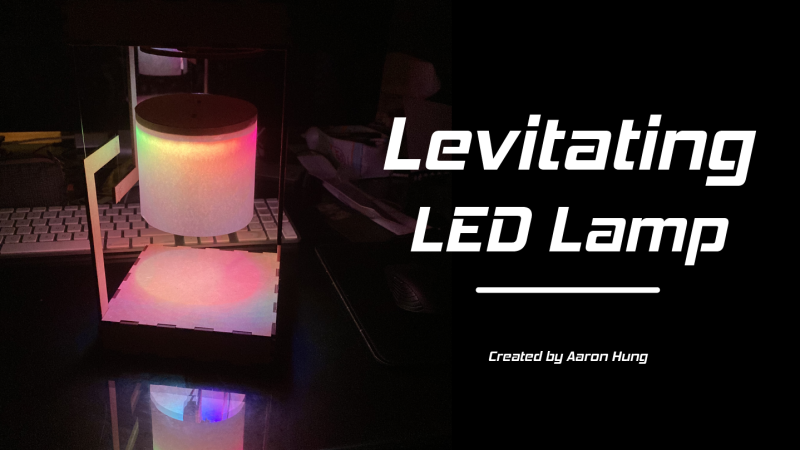If you think of levitating objects you probably think about magnets but this is not what [Aaron Hung] used to build his levitating LED lamp. To be fair, his lamp is not really levitating but merely generates the illusion through the principles of tensegrity. We have featured a number of tensegrity structures over the last months but this is maybe the first time somebody has used it to build a daily-use item.
In his instructable [Aaron Hung] points out that according to Earnshaw’s theorem magnetic levitation using static magnetic fields like those of permanent magnets is actually impossible. If you are interested, the Wikipedia article also explains why floating superconductors and the Levitron toy do not contradict this theorem. (TL;DR: they’re dynamic.)
Coming back to [Aaron Hung]’s tensegrity lamp, the construction is rather simple and only requires an Arduino Nano, a Neopixel ring, a 9 V battery some wood or cardboard, and fishing line. The tensegrity part of the lamp consists of two similar pieces of laser-cut wood which are held together by fishing line so that the top part seems to float in mid-air. Normally, tensegrity structures are very fragile so [Aaron Hung] added some extra lines for stability which allowed him to hang the lamp from the top section without collapsing the whole structure. After coding some animations for the Neopixel ring and adding a paper lampshade the project was finished.
We would like to see more tensegrity versions of classic DIY projects and it was fun to see that similar objects were already built from Lego.
[Video after the break].
















>according to Earnshaw’s theorem magnetic levitation using static magnetic fields like those of permanent magnets is actually impossible
That’s not true. The theorem only states that there will be one degree of freedom that is unstable. If you constrain that degree with something, then you achieve pseudo-levitation. The simplest version for example is a stick with a weight for balance that keeps the magnet from flipping over.
the first time somebody has used it to build a daily-use item.
Bicycle wheel.
Tacoma Narrows bridge…. no wait, that didn’t go so well.
Pretty sure the wire wheel came first.
Nice post, thanks.
Been looking at these a few years ago when cheap electro magnetic levitation bulbs started coming out of China and reasonably priced too. So many things to do but, love magnetics – there is a potential physics issue re “turning against space” which can crop up ie odd torque issue – maybe I had too much whine when I built a proto ;-)
Do we know the height range offered from this particular ‘levitation’ ?
Btw Maybe get around a facet of Earnshaw’s by wiggling the permanent magnet positions, would have to be fast and might take more energy than just modulating the fields but, should be feasible though, comments ?
Dynamic levitation is the usual way to get around Earnshaw’s theorem. The common desktop demonstration is a spinning top.
Another thing that breaks the theorem is diamagnetic materials, which do not inherently have a dipole moment in the magnetic field, so they can be used to constrain the one degree of freedom that tries to flip the actual magnet around. Pure diamagnetic levitation is also possible, but weak.
This device does not use magnetic levitation at all.
Should define it when introducing a rare word like tensegrity.
(In this case, tensegrity appears to mean hanging it with fishing line.)
I can’t go on the internet for a single day without seeing ‘tensegrity’ structures spamming all of my feeds – rare is contextual, if you’re too lazy to look up the meaning of a word that’s widespread in today’s culture then perhaps HaD is not the place for you?
You thought it was worth your time to shame someone about not using Google instead of providing a constructive answer? _And_ you want to exclude people from a community because of that?
Then perhaps HaD is not the place for you.